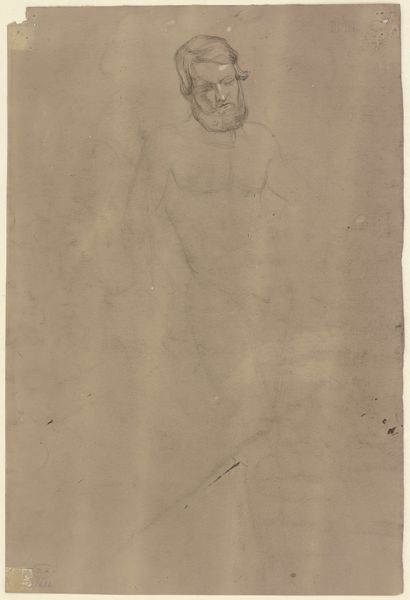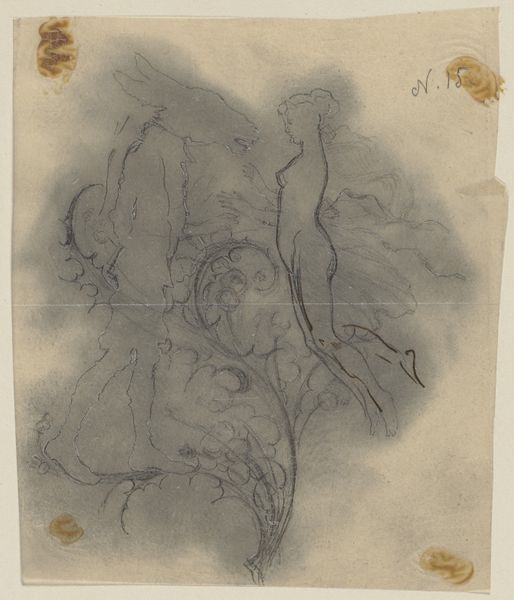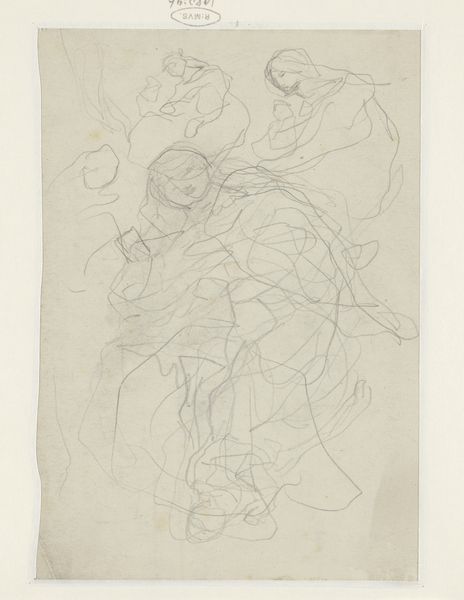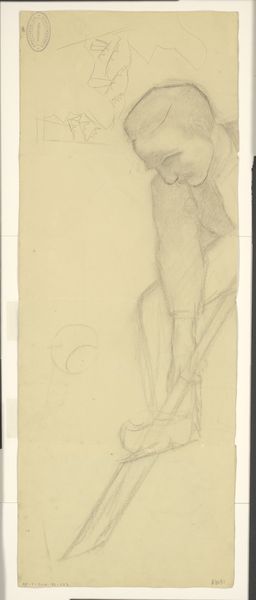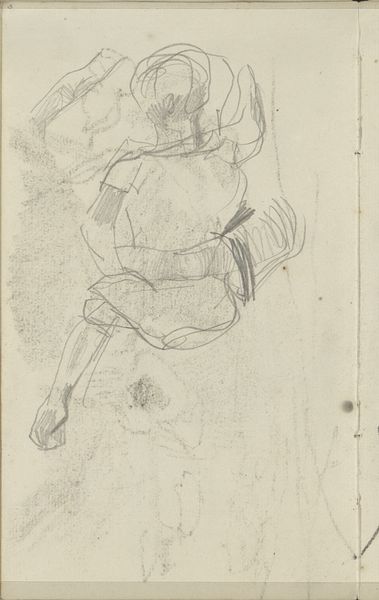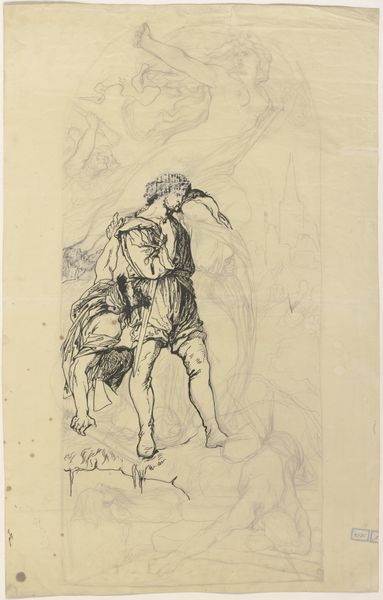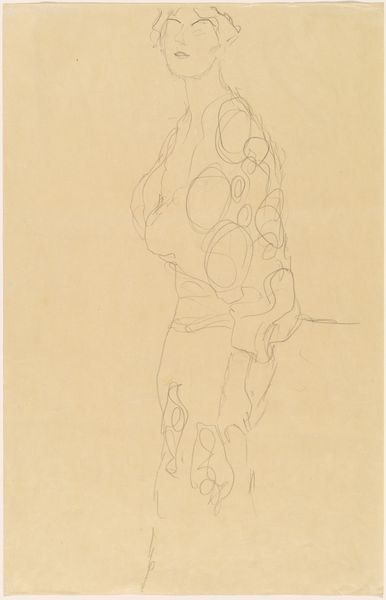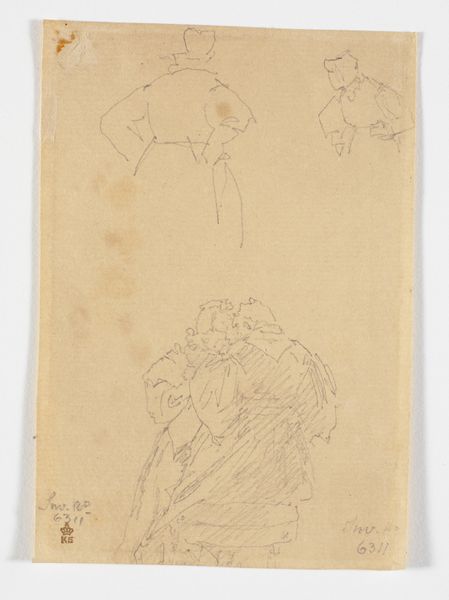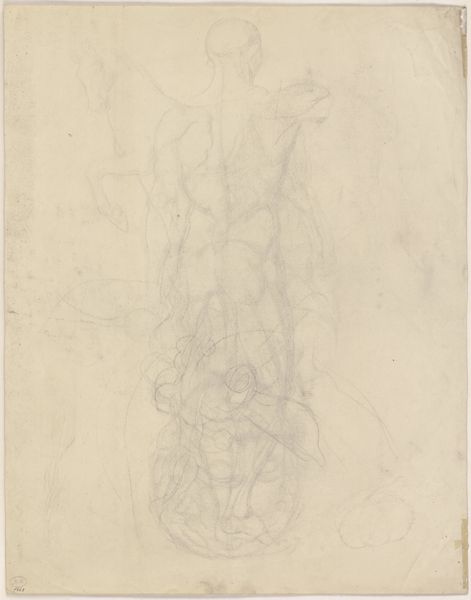
drawing
#
portrait
#
drawing
#
romanticism
Copyright: Public Domain
Curator: Here we have a drawing titled "Lautespieler in historischer Tracht, emporblickend" by Victor Müller. It resides here in the Städel Museum. Editor: Even in its unfinished state, the gaze upwards seems incredibly hopeful, almost spiritual. And I am quite taken by the subject’s attire, which I suppose connects it to its time. Curator: Indeed. While undated, Müller’s artistic production situates this piece squarely within the Romantic era. Note how the historical costume allows him to idealize and connect with a pre-industrial past. The lutespieler, or lute player, evokes a time of troubadours, courtly love, and perhaps, a more innocent Germany. Editor: Innocent? This drawing feels melancholic to me. His upward gaze could just as easily be one of yearning, maybe even resignation to the hierarchies and constraints of his own time. And I'm especially curious about that instrument; who was playing music, and for whom? Curator: That is the intriguing thing about Romanticism, isn't it? It provided a space to explore not just the beauty of an imagined past, but the anxieties and contradictions of modernity, particularly the rising industrial society. Editor: Absolutely. This drawing serves as a beautiful entry point into contemplating not only art history, but how these romanticised historical contexts continue to affect societal structures, representation, and how people see themselves reflected – or not reflected – in culture. Curator: Agreed. This work compels us to look beyond a surface reading, and think more about the long history and function of the German identity. Editor: Definitely, art, even an unassuming drawing, opens up critical spaces to ask questions, reflect, and, hopefully, instigate change.
Comments
No comments
Be the first to comment and join the conversation on the ultimate creative platform.
